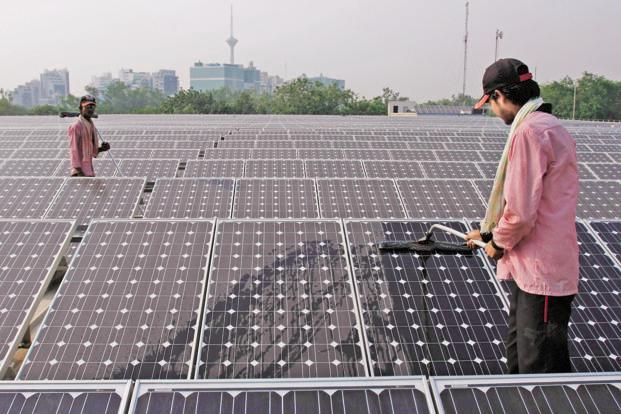- Russia Starts Largest Renewable Energy Auction in Bid for Jobs
Russia is pressing ahead with its biggest-ever auction for renewable energy, seeking to award contracts to purchase 1.9 gigawatts of clean electricity as well as attracting foreign investment to support jobs at home.
The government tender starting Monday has attracted the interest of Fortum Oyj, Finland’s largest energy company, which is prequalified to participate in the auction. Enel SpA of Italy may also participate.
“Russia has had a long history of leadership in the energy sector and now has the opportunity to extend that leadership into renewable energy,” said Adnan Amin, director-general of the International Renewable Energy Agency. Developing the country’s renewable resources, he said, “can significantly contribute to the country’s economic objectives such as economic growth and employment.”
The Russian government enacted strict local-content rules in 2012 and 2014 in a bid to stimulate job creation. Clean energy plants aren’t allowed to be installed unless a certain percent of the equipment is made locally, and that portion rises every year. Since no company makes wind turbines in Russia, this has hampered the industry. In 2017, the portion is fixed at 40 percent.
The auction is from May 29 to June 9, in two stages, according to Cuming. Participants will begin to submit their bids on Monday, with the decision from the government expected for a later date.
“You bid to build a project of a certain capacity in a given year,” said Victoria Cuming, head of policy analysis in Europe, the Middle East and Africa at Bloomberg New Energy Finance. “This year it’s for 2018 to 2021. It takes time to build manufacturing capacity so even with a 2021 project, you’d be hoping that someone makes a move into Russia very soon.”
State-owned nuclear company Rosatom Corp. recently said it will retool existing factories to make turbines, marking a turning point for the industry. It sought to establish partnerships with some of the leading European manufacturers. Siemens AG, General Electric Co. and Vestas Wind Systems A/S have also shown interest, according to Rosatom. It made an agreement in February with Lagerwey Wind BV, a smaller Dutch manufacturer. Vestas declined to comment. Siemens and GE did not reply to requests for comment.
Oil Producers
Other oil-producing nations such as Saudi Arabia and the United Arab Emirates are also making moves into renewable energy. Both countries burn vast amounts of their oil and natural gas domestically for power generation, with Saudi Arabia consuming about 1 million barrels a day to keep its lights and air conditioners on.
Russia’s environment is more conducive to wind and hydro than solar, although some small-scale projects are being built in rural areas. Its appeal as a renewable energy market lies in the electricity prices it might pay, according to Fortum. It has previously signed a power purchase agreement with a fixed price significantly higher than in other markets, according to Fortum’s Chief Financial Officer Markus Rauramo.
The Finnish energy company is building a 35-megawatt wind project in Ulyanovsk, east of Moscow. It received the right to build the project in 2015, when the local content rules were less stringent. It’s using Chinese-made turbines from Dongfang Electric Corp.
“For our project in Ulyanovsk, the price was very considerable,” Rauramo said. “It depends on what the ruble-euro exchange rate it is, but it was more than 150 euros per megawatt hour.”
That’s about 70 percent higher than the comparable average cost of onshore wind across Europe, data from Bloomberg New Energy Finance showed.
Fortum recently entered into a joint venture with Rusnano OAO, a state-owned Russian investment firm. The Finnish company said its long-term plan is to build approximately 500 megawatts of wind in the country. Fortum is in talks with European turbine makers on how to “match the local content requirements,” Rauramo said.
Rosatom has applied to build 610 megawatts by the end of 2020.

 Forex3 weeks ago
Forex3 weeks ago


 Naira2 weeks ago
Naira2 weeks ago
 Billionaire Watch2 weeks ago
Billionaire Watch2 weeks ago




 Naira2 weeks ago
Naira2 weeks ago




 Naira4 weeks ago
Naira4 weeks ago




 Naira2 weeks ago
Naira2 weeks ago


 Naira7 days ago
Naira7 days ago
 Banking Sector4 weeks ago
Banking Sector4 weeks ago










